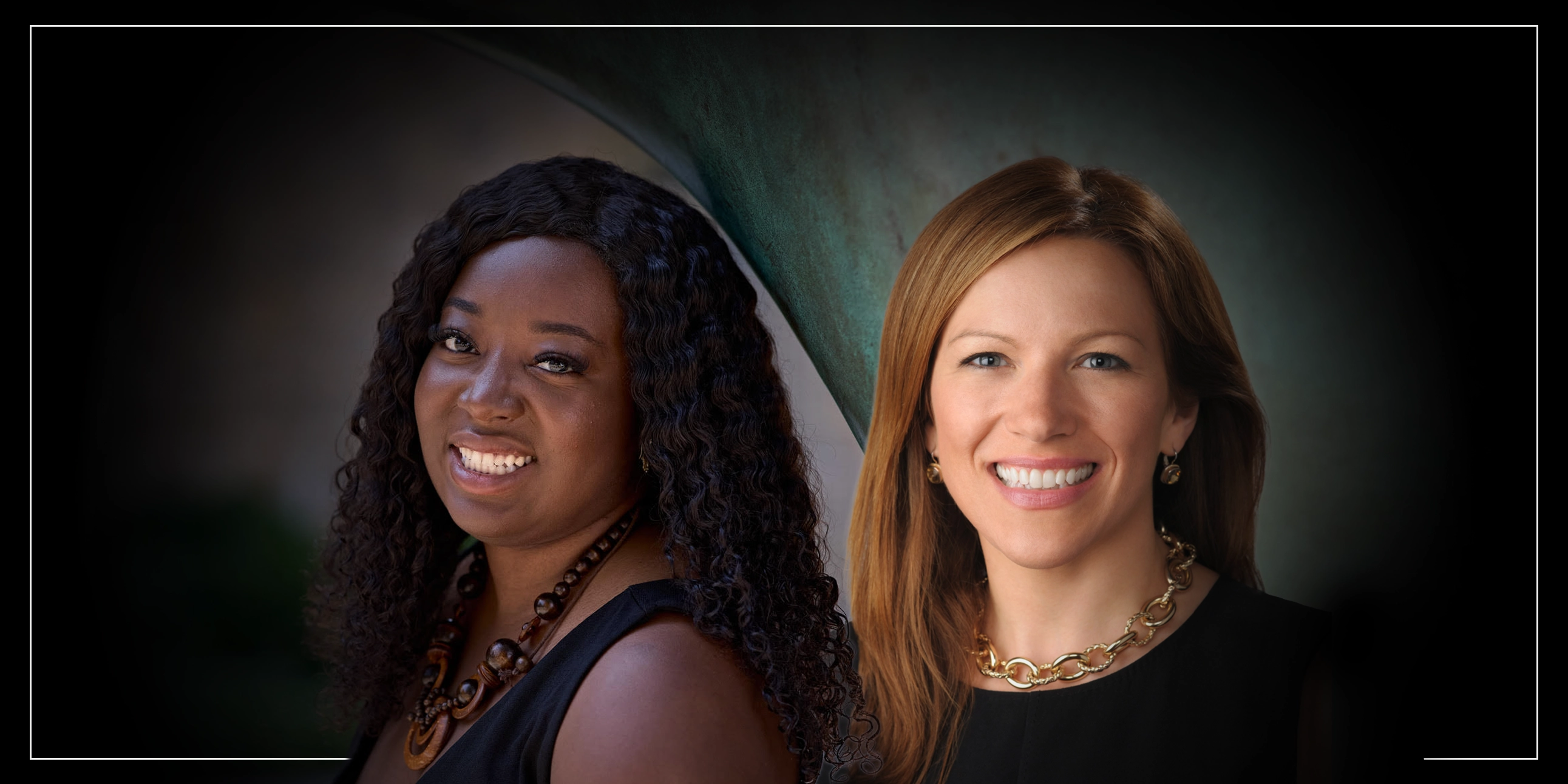*Note: Our availability for new J.D. admissions clients will reopen on Tuesday, January 6.
X
Today's podcast is from our consultant Sir Williams, former Director of Admissions at the University of Wisconsin Law School, where he led the successful implementation of UW’s first pre-law diversity pipeline summer program. In this podcast, Sir gives a broad introduction to law school admissions for under-represented minority (URM) applicants — what "counts" as URM for admissions, why it matters, and some special considerations URM applicants might want to flag.
A few links mentioned in the podcast:
You can listen below, or on SoundCloud or Apple Podcasts.
Please note that our reservation list for next cycle (2021-2022) is now open.
Hello, my name is Sir Williams. I'm a consultant with the Spivey Consulting Group. Prior to joining Spivey, I worked in law school admissions at the University of Wisconsin Law School — I spent about six years working as Director of Admissions and an additional two years as a student employee before I graduated.
Today, I'd like to talk about special considerations for under-represented minority applicants in the law school admissions process. However, before we dive into our discussion about special considerations for URM applicants, I think it makes sense to actually define what that term means and to talk a little bit about why that status can be important in the law school application process. "URM" stands for under-represented minority. The under-representation is in reference to the racial and ethnic makeup of U.S. attorneys versus the racial and ethnic makeup of the United States as a whole. What you'll find if you look at those two groups is that they don't actually match up. If you're ever interested in learning more about this, there's a very nice table available at LSAC.org — it's called the Diversity in the U.S. Population and the Pipeline to Legal Careers. It lays out how several minority groups within the United States are underrepresented within the legal profession. And what that underrepresentation means is, for example, in 2018, Hispanic and Latinx people made up a little over 18% of the U.S. population: 18.3%. But at the same time, according to Bureau of Labor Statistics data, Hispanic and Latinx people only made up 5.7% of lawyers in the United States for 2019. This same concept of under-representation applies to several different racial and ethnic groups in the United States, including people who identify as Black or African American, American Indian or Alaska Native, Asian, Native Hawaiian or other Pacific Islander — these are all under-represented groups within the pipeline to legal education, or within legal education itself, or within the population of U.S. attorneys.
Unfortunately, the issue of under-representation within the legal profession — so one's status as an under-represented minority — isn't very straightforward. This is a function of, among other things, how race and ethnicity data is tracked in the law school application process and beyond, and it's also a function of how specific individual law schools define under-represented. Whereas some schools may consider any Asian applicant to be underrepresented, other schools might differentiate between various sub-populations of the Asian diaspora, which segues really nicely into my next discussion point, which is — why does URM status even matter in the law school application process? In a word, I think it comes down to diversity. To the extent a person might identify as an under-represented minority, it's likely that their status as a member of that group or those groups has informed their perspective and view of the world in a meaningful way. Being able to articulate this is one really powerful way an applicant might differentiate themselves from others in the same applicant pool at the same school during the same cycle. My favorite analogy on why diverse perspectives are important and valuable in legal education involves the mirrors that you find on any automobile. In my experience, most automobiles come with two side mirrors and a rear view mirror. The purpose of those mirrors is to give you specific information about your surroundings from a very specific perspective. Said a little differently, the mirrors are there to help compensate for our natural blind spots. When we are eyes-forward, fully focused on the road, we can't see what's happening on either side of us, and we definitely can't see what's going on behind us — without the mirrors, which are there to give us much-needed perspective when we're navigating what could otherwise be a very tricky, dangerous situation.
A common question I get from URM law school applicants is, how do I talk about it? How do I raise it? What should I say? My response to that question comes from my personal experience navigating the law school admissions process, and it also comes from my personal experience being on the other side and making recommendations to the committee. Use the various application components you have at your disposal to tell your story. Use that personal statement, use that diversity statement, use those optional short answer essays to talk about how your membership in that group has shaped you and inspired you. You can talk about your culture, you can talk about your language, you can talk about that history. But all of that stuff, including your membership in the group, is only relevant to the extent that it has affected you — that it has, again, shifted your perspective — that it helps you see the world in a different way. If you can't talk to me about those things, you've missed an opportunity to stand out.
Now that we've covered what it means to be a URM, and why it matters in the application process, we're going to spend the rest of this time talking about special considerations for URM applicants in the process. The first consideration is choosing where to apply. Because there are so many different law schools to choose from, it's important to understand how they're alike and how they're different. All American Bar Association approved law schools are alike in the sense that they provide an opportunity to earn a Juris Doctor degree within a period of two to six years, and at the end, you will be eligible to sit for the bar exam to become a licensed attorney in any of the 50 states. So the first step in choosing a law school is figuring out, how are law schools different from one another, and which of those variables are most important to you?
So, what are some big ways that law schools are different from one another? Location, cost, rankings, employment outcomes, demographics of the class — those are all big differences that you can use to differentiate one law school from another. I encourage you to take some time to write down all of the things that matter to you in law school. And once you've got that list of variables written out, then I encourage you to sort that list in order of importance. So if affordability is most important to you — avoiding debt — then that should be the #1 thing at the top of your list. If employment outcomes are most important to you — you really want to be able to finish law school and land a job in a particular geographic market — then that should be at the top of your list. For some people, again, it's prestige. So if U.S. News ranking is the number one thing, then own that, and put it at the top of your list. By the way, here's a little pro tip: a very easy way to create your own rankings is to go to myrankbyspivey.com, and that's a great site where you can actually determine what metrics matter most to you and create a school list based on that ranking. The point is, I want you to be very intentional about choosing where you're going to apply.
Now, many people choose where they're going to apply based on how their hard numbers — so their LSAT score and their GPA — compare to the median numbers at the law schools that they're considering. That's a fine place to start, but the calculus definitely shouldn't end there, particularly for URM applicants. I'm going to explain why, but first, I need you to do something for me. I need you to pause this podcast, and go get a pen and a piece of paper.
Okay. On that paper, I need you to draw three concentric circles. So, draw one circle, and then draw a bigger circle around the first, and then draw a third circle around the second — so what you'll have is a circle within a circle within a circle. The largest circle represents all of the applicants to a particular law school in a particular cycle. The middle circle represents the subset who are offered admission in a given cycle. The smallest circle, the inner circle, represents the admitted applicants who say "yes" and actually start law school at that place. Here's the big thing. When you're looking at admissions data about any law school, you're only seeing data about the people in the smallest circle. You never see any GPA or LSAT information about everybody who got accepted, and you never see LSAT or GPA information about all of the people that applied. You only see that information for the people who accepted the school's offer to come. Why is that important? It's important because it skews your view of who is actually admissible at a school. You're looking at it saying, "Oh, well, School X has a median LSAT of 165, so that means I must need a 165 in order to get into this school." And that's actually not true. What it means is, half the admitted students who accepted the offer to attend scored at or above a 165. That's really specific; it doesn't tell you anything about who was admitted and how they scored. It tells you that, of the folks who accepted an offer to come, half of those people scored at or above a 165. Which means, the other half of the people who accepted the offer scored at or below a 165. This is where those other numbers that you always see reported out from the schools come in. Every school, in addition to reporting out a median LSAT and GPA for their incoming class, also reports out a 25th percentile and the 75th percentile LSAT and GPA for the incoming class. The 25th percentile numbers tell you that a quarter of the incoming class scored at or below that number. The 75th percentile number tells you that a quarter of the class scored at or above that value.
I went through the trouble of detailing all of that so that you understand, you never have access to good information about who received an offer of admission to any given law school. You only have decent information — not perfect — about who accepted the offers of admission from a given law school. So you should never look at those numbers and use them as a reason to say, "Oh, my numbers aren't good enough. I just shouldn't apply to that school."
There's also a lot of talk on the internet about the "URM bump" or the "minority bump." People would have you believe that there's some sort of special alternate process for URM applicants that doesn't apply to anyone else. And in my experience, that's just not true. As my colleague Mike Spivey is known for saying, the law school application process, the admissions process, is all about differentiation. So what you have as a URM applicant are additional opportunities, additional ways that you might differentiate yourself, that you might stand out in the process. But to be clear, the easiest way to stand out in the admissions process is empirically — if you can stand out on the numbers, great — but in addition to standing out on the numbers, there are many other ways that you can stand out. And so your status, your membership, being part of the underrepresented groups just provides an opportunity for you to talk about how you're different from other people that might be in the pool. Under-represented voices are, by definition, more difficult to find in the pipeline to law school, in law school, and in the legal profession.
The last thing I'll say about choosing where to apply based on the numbers as a URM applicant, is that it really comes down to supply and demand. So, if we look at the 2017-18 admission cycle, which is the last cycle I could find good publicly-available data on — and I found that data on the Paul Caron website, on his TaxProf Blog; he posted some numbers about LSAT score distribution as a function of race for that cycle, 2017 2018 — and the findings were pretty interesting. So, as it turns out, there were 590 African American applicants who scored between a 160 and a 180 on the LSAT that cycle. Now if we look at Hispanic/Latinx applicants, the number almost doubles — in fact, it more than doubles, to 1,241. And then if we looked at Asian American applicants, the number more than doubles again, to 2,691. And then if we look at Caucasian applicants, it goes up by a factor of five, so it goes to 12,291. So what all of that really means is — there is a supply and demand concern when it comes to applicants from various underrepresented groups who are scoring between a 160 and a 180. I'm not offering any commentary on why that is, because there are many reasons, and there are confounding reasons, so it's hard to control for different things — but again, there's a limited supply, and so that's a critical piece of information that under-represented minority applicants often aren't considering when they're trying to make selections about "Well, where should I apply?" and, "Oh, my numbers aren't 'good enough,' and so I'm just not even going to try." Law schools are painfully aware of the pipeline issues. And it's a consideration — not the consideration — but one of many considerations when they're reviewing files and making decisions about who's going to be a good fit at their school and who they want offer admission to. If you don't take anything else away from this entire podcast, it really should be that you can't make the judgment about where you should apply solely based on your numbers. There really is much more to it, and so you should be thinking about it, making your selections a little more broadly than that.
So, that concludes everything I have to say today on special considerations for URM applicants in JD admissions. Please reach out with thoughts and questions. Thanks so much.


In this episode of Status Check with Spivey, Anna Hicks-Jaco has a conversation with two of Spivey’s newest consultants—Sam Parker, former Harvard Law Associate Director of Admissions, and Julia Truemper, former Vanderbilt Law Associate Director of Admissions—all about the law school admissions advice that admissions officers won’t give you, discussing insider secrets and debunking myths and common applicant misconceptions.
Over this hour-and-twenty-minute-long episode, three former law school admissions officers talk about the inner workings of law schools’ application review processes (31:50), the true nature of “admissions committees” (33:50), cutoff LSAT scores (23:03, 46:13), what is really meant (and what isn’t) by terms such as “holistic review” (42:50) and “rolling admissions” (32:10), tips for interviews (1:03:16), waitlist advice (1:15:28), what (not) to read into schools’ marketing emails (10:04), which instructions to follow if you get different guidance from a law school’s website vs. an admissions officer vs. on their application instructions on LSAC (14:29), things not to post on Reddit (1:12:07), and much more.
Two other episodes are mentioned in this podcast:
You can listen and subscribe to Status Check with Spivey on Apple Podcasts, Spotify, and YouTube. You can read a full transcript of this episode with timestamps below.


In this episode of Status Check with Spivey, Mike has a conversation with Dayna Bowen Matthew, Dean of the George Washington University Law School, where she has led the law school since 2020. Prior to her time at GW, she was a Professor of Law at the University of Virginia School of Law, the University of Colorado Law School, and the University of Kentucky College of Law, and she has served as a Senior Advisor to the Office of Civil Rights of the Environmental Protection Agency (EPA). She is a graduate of Harvard University (AB), the University of Virginia School of Law (JD), and the University of Colorado (PhD).
Mike and Dean Matthew discuss the increase in law school applicants this cycle (7:42 and 18:11), advice for applying during a competitive cycle (12:16), how the large firm hiring process in law school has changed into something that "bears no resemblance" to how it worked for decades (5:11), how the public interest and government hiring process has changed as well (6:27), how AI could impact legal employment in the future (24:10), why she chose the law school where she attended (2:33), what she would do differently if she were applying today (3:36), how to assess law schools' varying "personalities" (13:22), the fungibility of a JD (16:45), advice for law students (18:53), and what it's like being a law school dean in 2025 (28:53).
You can read more about Dean Matthew here.
We discussed two additional podcast interviews in this episode:
Note: Due to an unexpected technical issue during recording, Mike's audio quality decreases from 7:35 onward. Apologies for any difficulties this may cause, and please note that we have a full transcript of the episode below.
You can listen and subscribe to Status Check with Spivey on Apple Podcasts, Spotify, and YouTube. You can read a full transcript with timestamps below.
Correction: Dean Matthew's family reminded her that she actually applied to three law schools rather than two, including Harvard Law, where she received a denial.
As Emmy-winning news anchor Elizabeth Vargas stated in one of our recent episodes, "There is nobody out there who is at the top of their field, in any field, who has not been told 'no.'"


In this episode of Status Check with Spivey, Spivey consultant and former admissions dean Nikki Laubenstein discusses the financial aid and student loan considerations that prospective law students should be thinking about post-“Big Beautiful Bill,” joined by Sydney Montgomery, who is the Executive Director & Founder of Barrier Breakers, and Kristin Shea, who has led the law school financial aid office at Syracuse University for almost a decade as a part of a 20-year career in legal education.
Nikki, Sydney, and Kristen talk about the changes to student loans and student loan caps resulting from the One Big Beautiful Bill Act (9:53), the changes to repayment plans (36:08), who those changes apply to (5:31), the differences between undergraduate financial aid/scholarships and law school financial aid/scholarships (21:02), understanding tuition vs. total cost of attendance and how that relates to scholarship reconsideration and student loan caps (24:27), possible ways schools could help fill the gap especially for students targeting public interest jobs (38:31), advice for those planning to work while in law school (41:10), why prospective law students should start thinking about financial aid earlier on in the admissions process than most do (30:57), and more.
Barrier Breakers is a nonprofit that has worked with 7,000+ first-generation and other marginalized students on the college and law school application process. Sydney Montgomery, the daughter of a Jamaican immigrant mother and military parents, was the first person from her high school to go to Princeton University and then later Harvard Law School. She has dedicated her life and career to supporting first-generation students and has a particular passion for financial aid. She is a member of the Forbes Nonprofit Council and has been featured in Inc., Forbes, FastCompany, Medium, CNBC, and others.
Kristin Shea is a higher education professional with twenty years of experience, including law school enrollment management, recruitment, and financial aid; alumni, donor, and employer relations; and marketing and communications. The last decade of her career has been dedicated to financial aid, and she is passionate about helping law students make smart, thoughtful financial plans for their education. She holds a bachelor's degree in biology and psychology and an MBA from Le Moyne College.
We hope to do a follow-up episode in the spring with more information on how law schools are addressing these changes. We also encourage you to reach out to the financial aid offices of schools you're considering once admitted to learn about any programs they may offer and any assistance they can provide. As Kristin says in this episode, "The map may have some alternative directions, but you can still reach your destination, and there are many people who want to help." We have also linked a number of financial aid resources below.
Federal Student Aid:
AccessLex Institute Resources:
Free Credit Report:
Annual Credit Report.com - Home Page
Equal Justice Works – LRAP FAQ
Important Questions to Ask About Any LRAP - Equal Justice Works
You can listen and subscribe to Status Check with Spivey on Apple Podcasts, Spotify, and YouTube. You can read a full transcript with timestamps below.